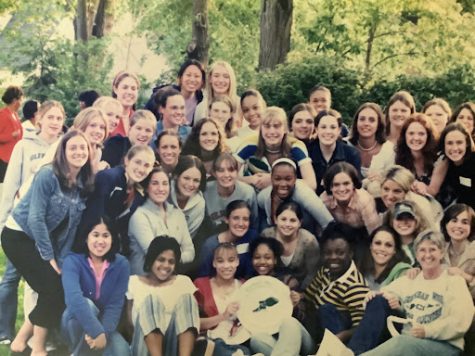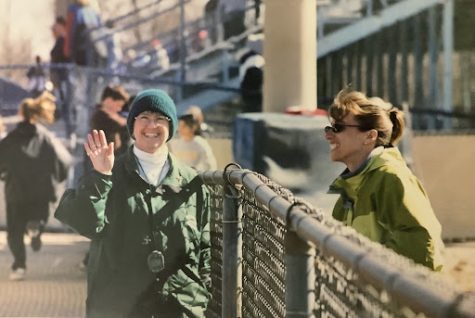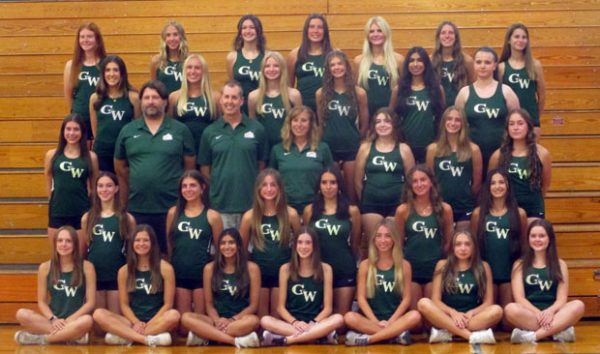A Look Into Girls Track and Title IX
In 1972, David Bowie introduced the world to Ziggy Stardust, HBO was brought to television, and NASA’s space shuttle program was launched…
And Title IX was passed, which ushered in a new era of women’s sports.
One of the first programs included was track. Just over fifty years later, the sport has continued to evolve and grow. As the athletes are advancing in their competitions, it is important we recognize the hard work these competitors have poured into their season and the history tied to this special team here at West by sharing their unique perspectives on this sport.
Since Mid-February, competitors have been training in their seasons. By combining weight-lifting, group work, and event-specific practice, they have worked very hard to train for meets.
Madeline Murin, a current student athlete, provides some insight to the activity right now. She loves being able to run in many different events. There is truly one for each type of athlete. Outside the track, she loves the team atmosphere. In her words: “I love the community that it brings. I met so many different people.” While the program demands a large amount of commitment and effort, she believes “it’s so much fun.” By being a part of the team, athletes are able to develop so many memories and reach personal performance goals.

Currently, Mrs. Hass is the Head Coach of Girl’s Track. For her, the position always made sense. She ran track in high school and college, so when approached about coaching, she reflected, “It was kind of a natural fit.” In addition, Coach Pariseau had already established a good track program, so there was no need to start from scratch. When asked about the most rewarding part of her experiences, she responded, “Participation and coaching at a high level is a labor of love. If it is something you truly love and are truly committed to, it is worthwhile. We’ve had some really good athletes come to the program, but to me, the most rewarding part is the kids who constantly surprise themselves and surprise us by what they are capable of doing.” In Coach Hass’s words, an important message students should keep in mind is “If you can work hard and commit yourself, whether or not you are the best isn’t what actually matters. It’s the process.”
Ultimately, Title IX made all of this possible. However, she notes “A lot of kids don’t know what Title IX is right now. While we can celebrate that, the fact of the matter is there are still ramifications that are present today.” Some of these effects include the limited number of female head coaches and that females don’t get the same attention as males for their athletic pursuits. According to her, “The idea that girls and women are just as valuable, just as important, and deserve just as much attention as their male counterparts is something that kind of drives me.” Therefore, she has worked hard to continue a team where girls are able to show their hard work and achievement. She wants students here to “understand that you have opportunities that did not exist for a lot of people.” Furthermore, she says, “As women, we have to lift each other up.” On that inspirational note, let’s hear from the woman who was the first coach of the track team.

When Mrs. Pariseau began coaching, she recalled “I knew nothing.” For her, the path to this position was very different. She remembers, “At the time, I was teaching physical education. Another woman had done it for one year. None of us really had coached before; we were PE teachers. The athletic director asked me which sport I wanted to coach: gymnastics or track. I said track.” When she started, she did not have much background knowledge on the sport. Though she did help with statistics for the men’s team in high school, she never had the chance to coach or participate.
Therefore, she was mentored by Jim Arnold, who was the male coach. From her experience, “Jim Arnold encompassed everything and certainly helped a lot. He was always right there.”
After the initial adjustment, she “loved it.” Some of her favorite memories include winning the conference for the first time, seeing the first person to place at state, coaching a state champion, and seeing the joy in athletes when they reach their goals.
Overall, she sums it up by declaring: “We’ve seen some great athletes. It’s just been fun.” That’s not to say there weren’t some challenges. For starters, the initial team only had twelve girls. On top of that, the men’s coaches did not want the girls to use the track or indoor facility. An ongoing issue was that “the parents of these girls, the mothers, had not participated in any type of athletics, so it was hard for them to understand the commitment .” Eventually, by the later seasons, the girls and families came to adjust and people began treating the commitment as equal to the men’s teams.
Additionally, she had the help of both Mr. and Mrs. Hass. Unlike her, “They were both athletes. I think that helped.” Overall, the experience has opened her eyes to the world of athletics for girls.
She loves the amount of confidence participation in a sport can bring female athletes. As individuals continue the evolution of the sport, she hopes people understand that “Not everyone is going to be a state champion. You go out there and you have a goal. And you achieve it.” And indeed, so many girls have. Best of luck to the girls track team as they continue this legacy!


Blake loves writing about sports, local events, and entertainment. Outside of school, they are a member of the Forensics team, enjoy playing lacrosse,...









